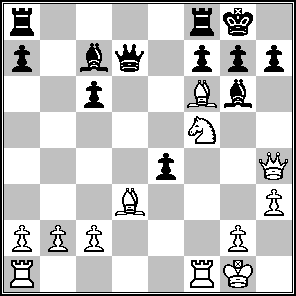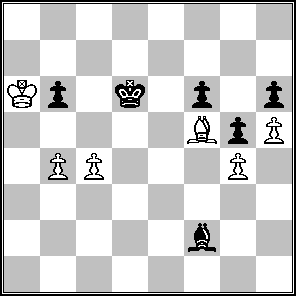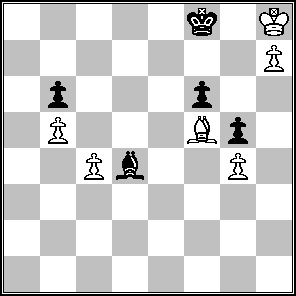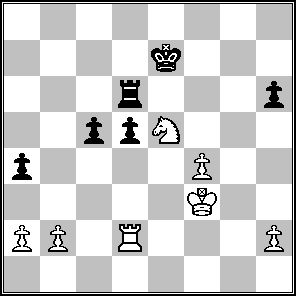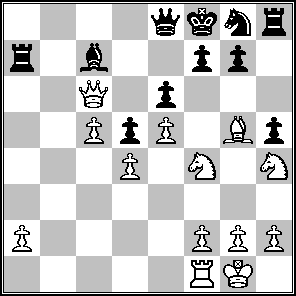Here's the gig: I'm using Fred Reinfeld's
1001 Sacrifices and Combinations for tactics training. However, I'm not solving the problems as presented in the book and checking Reinfeld's answers to see how many I get right. Rather, I set up a problem in Hiarcs or Fritz and play it against the engine until one of us gives up. In theory, this exercise should present many opportunities for the engine to resign. In practice, my capacity to lose or draw a winning position humbles me.
In the position below, it is White's move. The tactic that Reinfeld had in mind is simple enough.

1.Nxe3 and black loses quickly with 1...Rxe3. 2.Ra8+ Kh7 3.Be4+ winning the rook. That's all Reinfeld wants the pupil to find. But, Hiarcs does not play 1...Rxe3. Rather,
1...Be2 gives White a decision regarding placement of the knight. Care is needed because snatching the pawn on e5 leads to Rd1+ and Bh3 with checkmate to follow.
After quite a few moves more, I lost my way and Black gained the edge. During post game analysis Hiarcs pointed out a variation I had overlooked, leading to the next diagram with Back to move. I set up this position and started again.
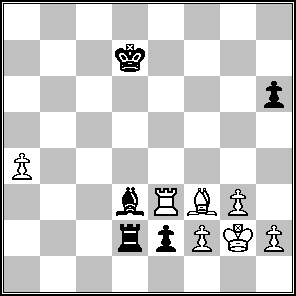
Hiarcs played
19...Kd6. How can White proceed now?
I thought to activate my king, so played
20.g4 Bc4 21.h4 Ra2 22.Kg3 Ra3 an unpleasant pin 23.Bxe2 Rxe3+ 24.fxe3 Bxe2 reaching the next diagram.
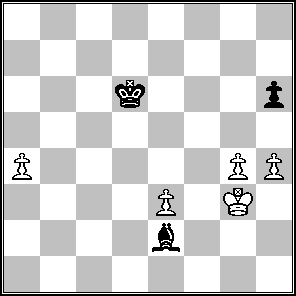
Hiarcs gives White an advantage of 2/3 a pawn in this endgame. The bishop has a lot of work to do stopping all White's pawns, but my immediate sense was that the cleric was up to the task. To my surprise, I managed to win this position!
25.Kf4 Ke6 26.e4 Bc4 27.a5 Ba6
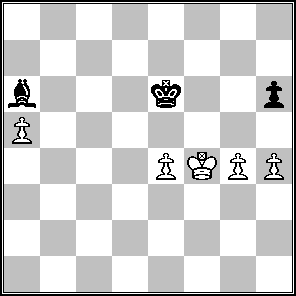
28.h5! Kf7 29.Ke5?! a wasted maneuver looking for the next step in the plan
29... Bb7 30.Kf4 Ba6 31.e5 Bc8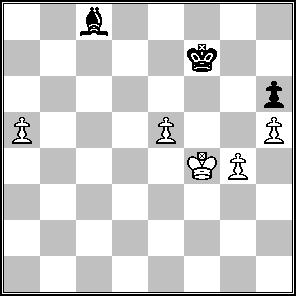
32.g5! Kg7if 32...hxg5, 33.Kxg5 Ba6 34.h6 Bd3 35.Kf4 and the Black king must defend e8, while the bishop cannot stop both flank pawns.
33.g6 Kf8 34.Ke4 Ke7 35.Kd5 Bb7+ 36.Kc5 Hiarcs resigns 1-0
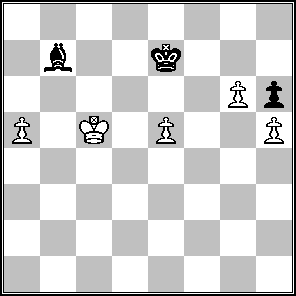
The bishop will fall stopping the a-pawn, and the Black king cannot take the e-pawn without letting the g-pawn promote. The White king has plenty of time to get back in action after capturing the bishop on a8.

